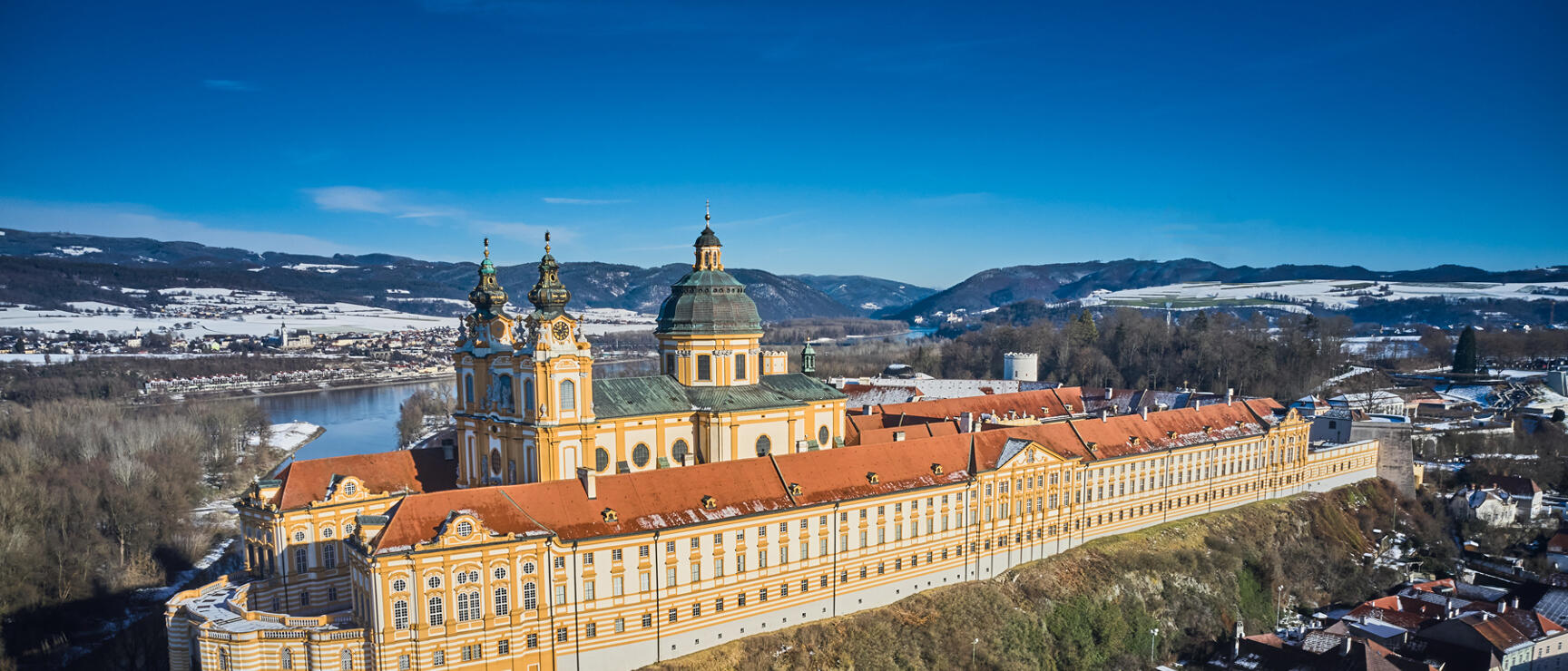
Melk Abbey
Gold leaf, stucco and marble
High above the Danube rises a golden, shimmering wonder of Baroque architecture: Melk Abbey. More than just a historic monument, it has been a vibrant centre of culture for almost a thousand years. Since 1089, Benedictine monks have lived here, preserving tradition while embracing new ideas.
What makes Melk so extraordinary? It is the perfect fusion of breathtaking architecture and living spirituality. Jakob Prandtauer’s masterpiece combines a majestic abbey church, one of Europe’s most valuable historic libraries, and magnificent halls into a harmonious ensemble.
Melk’s Baroque splendour draws not only lovers of architecture—art, music, and nature also form a special symbiosis here. In summer, the abbey’s gardens transform into green oases and stages for installations and sculptures by contemporary artists. The Baroque garden pavilion, once a place of scholarly reflection, now welcomes all who wish to soak up the beauty of this special setting.
Inside, the abbey library fascinates with more than 100,000 precious volumes, elaborately painted ceilings, and a sense of timelessness. The Marble Hall is a prime example of Baroque grandeur, featuring impressive ceiling frescoes and masterful illusionistic painting.
A visit to Melk Abbey is a journey through Austrian history at the heart of the picturesque UNESCO World Heritage region of the Wachau—an experience that captivates all the senses and leaves a lasting impression.
Meet the Abbey of Melk
Things to see in Melk Abbey
A snapshot of history
Melk Abbey - then and now
The Benedictine monastery was founded in 1089 by Margrave Leopold II on the site of a former Babenberg castle. In the 15th century, it became the starting point of the important Melk monastic reform.
The magnificent Baroque complex we see today was built between 1702 and 1746 under the direction of architect Jakob Prandtauer and completed by Josef Munggenast after his death. It includes the church, library, and Marble Hall.
Still an active monastery, it is also home to one of Austria’s oldest secondary schools and welcomes more than 500,000 visitors each year.
Who is living in the abbey?
The Benedictines of Melk Abbey
A community of Benedictine monks has lived at Melk Abbey since 1089. Today, the convent is home to 22 monks. Some live within the abbey itself, others in parishes belonging to the monastery. Wherever they are based, they strive to continue the duties entrusted to the abbey centuries ago.
Events in Melk Abbey
Climate Protection Info
Social and ecological sustainability
Monument conservation helps preserve and maintain historic buildings for future generations. By restoring and maintaining structures such as castles, palaces, and monuments, valuable resources like building materials are saved, and soil sealing from new construction is avoided.
In this way, preserving precious historic buildings supports both climate protection and the safeguarding of traditional craftsmanship—because ancient materials and techniques require specialised knowledge and skills.
Accessibility and inclusion in art and cultural experiences also strengthen social sustainability and promote a spirit of mutual respect.